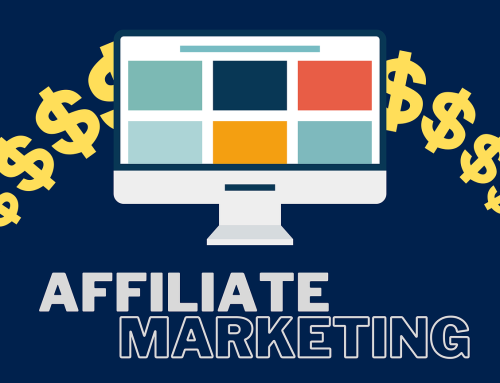![]() No one ever accuses Facebook of being a static site – the plethora of major EdgeRank changes in the last twelve months is ample evidence. Recent updates have incited a cacophonous chorus of frustration, as many marketers report lower-than-average reach with the current tools and trends. As a result, businesses feel the social media giant has devalued the audience they worked so hard to build and maintain, and that advertising on Facebook is no longer such a windfall. The truth of the matter? Things are better than ever for marketers using Facebook – one simply has to be informed of the new tools available to them. Facebook has not lessened the impact of the audience you’ve built; they’ve simply provided some new ways of leveraging your reach. Their fatal flaw in the recent rollouts is simply a matter of communication, as marketers aren’t aware of all their new power.
No one ever accuses Facebook of being a static site – the plethora of major EdgeRank changes in the last twelve months is ample evidence. Recent updates have incited a cacophonous chorus of frustration, as many marketers report lower-than-average reach with the current tools and trends. As a result, businesses feel the social media giant has devalued the audience they worked so hard to build and maintain, and that advertising on Facebook is no longer such a windfall. The truth of the matter? Things are better than ever for marketers using Facebook – one simply has to be informed of the new tools available to them. Facebook has not lessened the impact of the audience you’ve built; they’ve simply provided some new ways of leveraging your reach. Their fatal flaw in the recent rollouts is simply a matter of communication, as marketers aren’t aware of all their new power.
Until now.
Most of us currently know about the ability to promote posts on Facebook. Promoted posts give business owners and users the power to feature their content to their fans, and their fans’ friends, for a set cost. This can give a nice extra boost to the value of your content. The real homerun, however, is the new ability to amplify your content. Because content amplification helps you target a highly relevant audience outside of your current fan base, it offers the biggest bang for your marketing buck.
What is a Promoted Post?
Promoted posts are, in many respects, no-brainers for savvy marketers. With a few selected demographic filters, business owners can target fans and their friends. This highlights selected posts to a filtered, targeted audience, displaying selected ads near their feeds. It’s a straightforward process with obvious benefits.
Here’s an example of how this is broken down. Say you run a business that sells vitamins, and you’ve got a current daily deal promotion involving multivitamins for adult women. A promoted post campaign might use the following targets:
* United States residents
* Women
* Ages 35-65
* Interested in: #vitamins, #health, #energy, #preventative medicine
Promoted posts would then place your ad in front of all your fans (and their friends) that fit the above criteria. On average, a promoted post reaches between 6-15% of your audience (depending on their level of engagement.)
Why Content Amplification Rules
There are many reasons content amplification is the new go-to for marketers looking to grow their audience. For starters, unlike promoted posts, amplified content is seen by relevant users who are not currently fans of your brand or page. Furthermore, this strategy lands posts in the user’s actual news feed, rather than the ad space sidebar to the right – a huge factor, especially for mobile users. News feeds are far more prominent than ad space, receive volumes more click-throughs, and are statistically proven to engage more users.
Setting up successful content amplification campaigns requires a few key considerations. As with all online advertising, diversity is imperative – you’ll want to try a few variants to see what targeting set yields you the best results. Top filters for breaking out content amplification include location, age, gender and any other metrics relevant to your product or business. In a perfect world, your demographic breakdowns should mirror the components you use in Google Adwords. Using the vitamin business as an example, a content amplification checklist could work as follows:
* Topic interest sets: #Your Vitamin Company, #vitamins, #multivitamins, #health
* Competitor interest sets: #GNC, #Centrum, #Herbalife
* Wider interest sets: #holistic medicine, #alternative health, #preventative health
The key here is not to limit your content to a single target audience. Each target set should be carefully monitored to determine broadest reach and highest engagement.
Why Isn’t Everyone Using Content Amplification?
Content amplification is a best kept secret simply because Facebook has been unsuccessful in communicating its existence and benefits. People just aren’t aware of their options, partly because the recent changes seemingly devalued their audience, rather than leveraging it all the more. Folks are apt to focus on the negative, and are currently missing the boat on the goldmine Facebook has offered. Because there’s been a rash of post-IPO updates, it’s quite challenging to keep up.
In addition to the little promotion content amplification has received, Facebook has also hidden the functionality within the API. Promoted posts have received far more attention, but because they don’t land in the user’s actual news feed, they just don’t hold a candle to amplification. Facebook would do well to bring this feature to a more prominent position in the API, rather than hide it in the Power Editor. In time, this will likely occur – but you have a leg up on your competitors by being in-the-know.
Deciding Who You Should Target
So you’re in love with the concept of content amplification, but now you need to decide who to target. Although deciding who to target is a bit trickier with content amplification, it really comes down to your actual campaign objectives. The best approach is a data-led focus, rather than the scatter gun method employed by Facebook’s recommended pages. You’ll want to identify new fans with interest profiles that match your content. Consider using insight tools and social data to help you zero in on the right targets. This will reduce your cost per engagement and increase the effectiveness of your content too. Some marketers are reporting a 30% engagement increase through savvy amplification usage. Not bad for a tool so few are even aware of!
How to Get Started and What to Budget
There’s yet another added bonus to content amplification – the cost. At just $20 per variation, you can afford to have several variants to find your sweet spot. Keeping in mind the multiple tests you’ll no doubt want to employ, be sure to stay on top of results and guarantee you are not wasting time and money on useless variations.
Deciding when to start this process is also easy – now is good. Because of the increased engagement, inexpensive cost and news feed prominence, there’s no reason to wait any longer. Take a hard look at your current campaign objectives and start to map out who you want to target. Make sure you bid and optimize your content amplification intelligently (a common mistake is bidding too high on a CPC basis), and be prepared to test different copy and image combinations. There’s no need to abandon promoted posts all together, but utilizing content amplification is the new must-do in online marketing.





